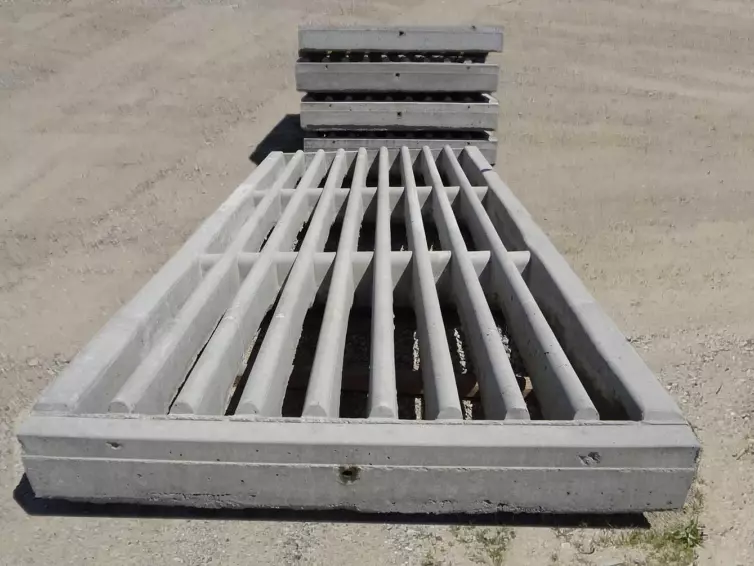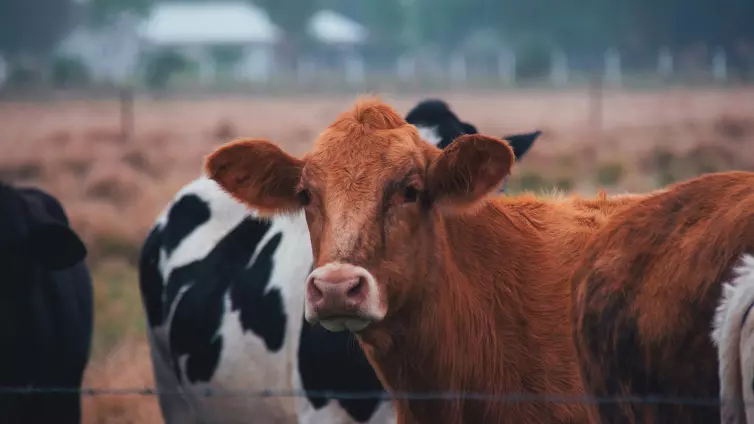If you're in agriculture or land management, you likely understand the hassle of constantly opening and closing gates.
 CXT Precast Concrete Cattle Guard
CXT Precast Concrete Cattle Guard
Design and Effectiveness: Cattle guards are made of steel or concrete bars over trenches, deterring livestock with visual depth illusions and physical barriers. This prevents them from crossing due to perceived risks and physical discomfort.
Variety and Materials: There are several types of cattle guards, including steel, concrete, portable, and electric versions, each suited for different scenarios and offering varying degrees of durability and deterrence.
Maintenance Needs: Regular maintenance such as cleaning, inspections, and ensuring no debris blocks the gaps is crucial for cattle guard effectiveness. Installation should consider animal type and traffic needs to ensure safety and functionality.
Here's where cattle guards come into play. These innovative solutions allow vehicles to pass freely through farms while keeping livestock securely within boundaries, eliminating the need for manual gates.
Cattle guards, or cattle grids, are barriers designed to prevent livestock from crossing roads while allowing vehicles to pass seamlessly. They are strategically installed at fence openings along roadsides. Cattle guards are typically constructed from a series of bars or beams spaced within a frame.
These gaps discourage livestock from trying to cross due to the uncomfortable and unsafe footing. Concrete is preferred for its durability and maintenance efficiency, although metal and plastic are also common.
Switch to CXT's Concrete Cattle Guard for efficient and safe cattle control. View this durable and reliable product that simplifies managing your farm and increases effectiveness.
If you're considering purchasing a cattle guard, it’s important to choose the right material and design for your specific needs. Concrete cattle guards are favored for their durability and minimal upkeep, but steel and plastic options have their own advantages, such as ease of installation and lower cost. Understanding the installation process is crucial, as proper placement and securing of the guard are key to its effectiveness and longevity.
Physical Deterrence: Cattle guards function by creating a physical barrier made of spaced bars or beams, which appear unstable to hoofed animals. This design plays on the animals' natural caution regarding footing, effectively deterring them from crossing.
Convenience for Vehicles: Cattle guards provide significant convenience by eliminating the need for manual gate operations, facilitating uninterrupted vehicle access, especially in agricultural regions.
Cattle have difficulty judging the depth of the gaps and perceive them as a risk of entrapment or injury.
Cattle guards are effective due to the psychological impact on livestock, particularly cattle. The uneven, grid-like appearance of the guards instills a natural avoidance behavior in animals, making these barriers crucial for controlling livestock movements without physical constraints.
 Psychologically, concrete cattle guards take advantage of livestock’s depth perception.
Psychologically, concrete cattle guards take advantage of livestock’s depth perception.
Psychologically, concrete cattle guards take advantage of livestock’s depth perception. Animals, especially cattle, have difficulty judging the depth of the gaps and perceive them as a risk of entrapment or injury.
This uncertainty makes them reluctant to step on other side of the grid, reinforcing the barrier without the need for a physical gate. This perception is key to the functionality of the a cattle guard, ensuring animals stay within their designated areas without the actual use of a physical fence or gate that would obstruct traffic.
The combination of an uninviting physical obstacle or structure and a psychological deterrent to cows crossing it makes cattle guards highly effective at controlling the movement of cattle while allowing free passage for automobiles. This dual-action barrier system is what makes cattle guards, particularly those made of concrete, a reliable and essential tool in rural and agricultural settings.
Durability and Longevity: Cattle guards are renowned for their robustness and ability to withstand heavy loads and environmental stress. Unlike metal rails, or steel, which can corrode over time, concrete remains intact and reliable in various environmental conditions.
Maintenance: Cattle guards require significantly less maintenance than their metal or wood counterparts. They do not rust or corrode, which means they need less frequent replacements and repairs.
Safety: Concrete provides better traction, especially in wet conditions, making it safer than metal, which can become slippery when the ground is wet.
Weather Resistance: Concrete is highly effective under different weather and ground conditions. Its non-conductive properties make it safe during electrical storms, unlike steel and metal.
Cost-Effectiveness: Although the initial installation cost for concrete cattle stop may be higher, the long-term savings are substantial. Concrete cattle guards last longer and need fewer repairs, reducing overall costs.
Enhance accessibility and safety with CXT's Cattle Guards. See why ranchers choose CXT for reliability and peace of mind.
In the USA, cattle guards are predominantly used in areas with significant agricultural or ranching activities. Here are some common locations and scenarios where they are utilized:
Rural and Agricultural Areas: Cattle guards are widely used in rural regions where there is a need to prevent cows and horses from roaming onto roadways while allowing trucks to pass easily.
Public Lands: They are commonly installed at the entrances to public lands, including national forests and national parks to control the movement of wildlife while providing access to these areas for recreational and commercial purposes.
Ranch Entrances: Many private ranches install cattle guards at their entrances to secure livestock while providing easy access for vehicles.
Roads and Highways: In states with large open grazing areas, cattle guards are often installed on public roads and highways where fenced boundaries are used to contain livestock.
State and Federal Lands: States like Texas, Colorado, Montana, Wyoming, and others with significant ranching industries use cattle guards to manage the interaction between livestock, wildlife, and vehicle traffic.
These installations are particularly effective in maintaining uninterrupted traffic flow and ensuring the safety of both livestock and drivers in areas where enclosures or fencing are used to manage large tracts of grazing land.
The upfront cost of a cattle guard can be offset by its longevity and reduced maintenance costs. When compared to metal, the return on investment becomes apparent quickly due to its durability.
Routine inspections and simple cleanings are generally all that's needed to maintain a cattle guard. Keeping the guard clear of dirt and debris ensures it remains effective and safe.
Keeping the guard clear of dirt and debris ensures it remains effective and safe.
It's worth keeping your cattle guard clean, as it can overtime fill up. Pioneer Woman wrote an blog post about how her cattle guard was accidentally backfilled over a long period of time.
Cattle guards are safe if they adhere to good design principles, are properly installed, and are well-maintained. It’s important for landowners to consider both the benefits and the potential risks associated with their use.
Design: A well-designed cattle guard will have gaps that are effective enough to deter livestock but not so wide as to pose a danger to the animals or smaller wildlife. The design should also support the weight of traffic that commonly pass over them, including heavy farm equipment.
Installation: Proper installation is crucial to ensure that cattle guards are safe and effective. They need to be installed level with the road surface and have secure foundations to prevent shifting or settling that could create uneven surfaces or gaps.
Maintenance: Regular maintenance is required to keep cattle guards safe. This includes checking for structural integrity, clearing debris from the gaps, and ensuring that the surrounding fencing is secure.
Wildlife Considerations: There are concerns about smaller wildlife and non-target animals being trapped or injured by cattle guards. Some areas may use modified designs or additional measures to mitigate these risks.
Human Safety: For pedestrians, particularly those on foot or on bicycles, cattle guards can pose a hazard if not clearly marked.
Before installation, it's essential to check local regulations. Some regions require specific permits or have regulations regarding the design, construction and use of cattle guards.
Drive straight through with CXT's Cattle Guards. Secure and simplify your operations. Contact us today to find out how our cattle guards can make your farm safer.
Here’s how cattle guards contribute to safety:
Prevents Roaming: Cattle guards are installed at property boundaries and road crossings to prevent livestock from wandering onto highways and other dangerous areas. Keeping them within safe grazing areas.
Reduces Stress: Cattle guards reduce the stress associated with herding and handling animals each time they need to move or when trucks need to enter or exit a property.
 Cattle guards are installed at property boundaries and road crossings to prevent livestock from wandering onto highways and other dangerous areas.
Cattle guards are installed at property boundaries and road crossings to prevent livestock from wandering onto highways and other dangerous areas.
Increases Road Safety: Cattle guards significantly reduce the risk of road accidents involving animals, which can be dangerous and even fatal for drivers.
Efficiency and Accessibility: Cattle guards allow for uninterrupted access across property boundaries. This is particularly beneficial for emergency response, delivery services, and regular farm operations, ensuring that access is quick and unhindered.
Low Maintenance: Unlike gates that can require frequent repairs and can be subject to mechanical failure, cattle guards are relatively low maintenance, ensuring that roads and property entrances are consistently safe and accessible.
Visual Deterrent: The presence of a cattle guard is also a visual cue to drivers, prompting them to be more vigilant.
Overall, cattle guards provide a practical and reliable solution for managing your herd while ensuring the safety and efficiency of road traffic in rural and agricultural settings. They are a testament to how a simple engineering solution can be created to help manage ranches effectively and maintain safety for both animals and humans.
Many farmers and ranch owners report high satisfaction with cattle guards. They note significant time savings and reduced labor costs.
Cattle guards offer an efficient, safe, and cost-effective solution for keeping animals contained and improving property access. Their durability, low maintenance, and safety features make them a superior choice over metal and other materials.
By choosing a cattle guard, you're investing in a long-term solution that will serve your ranch management needs effectively and efficiently.
Upgrade to CXT's Concrete Cattle Guards today and experience unmatched durability and reliability. Learn how our cattle guards can streamline your operations and keep your livestock safe, effortlessly!